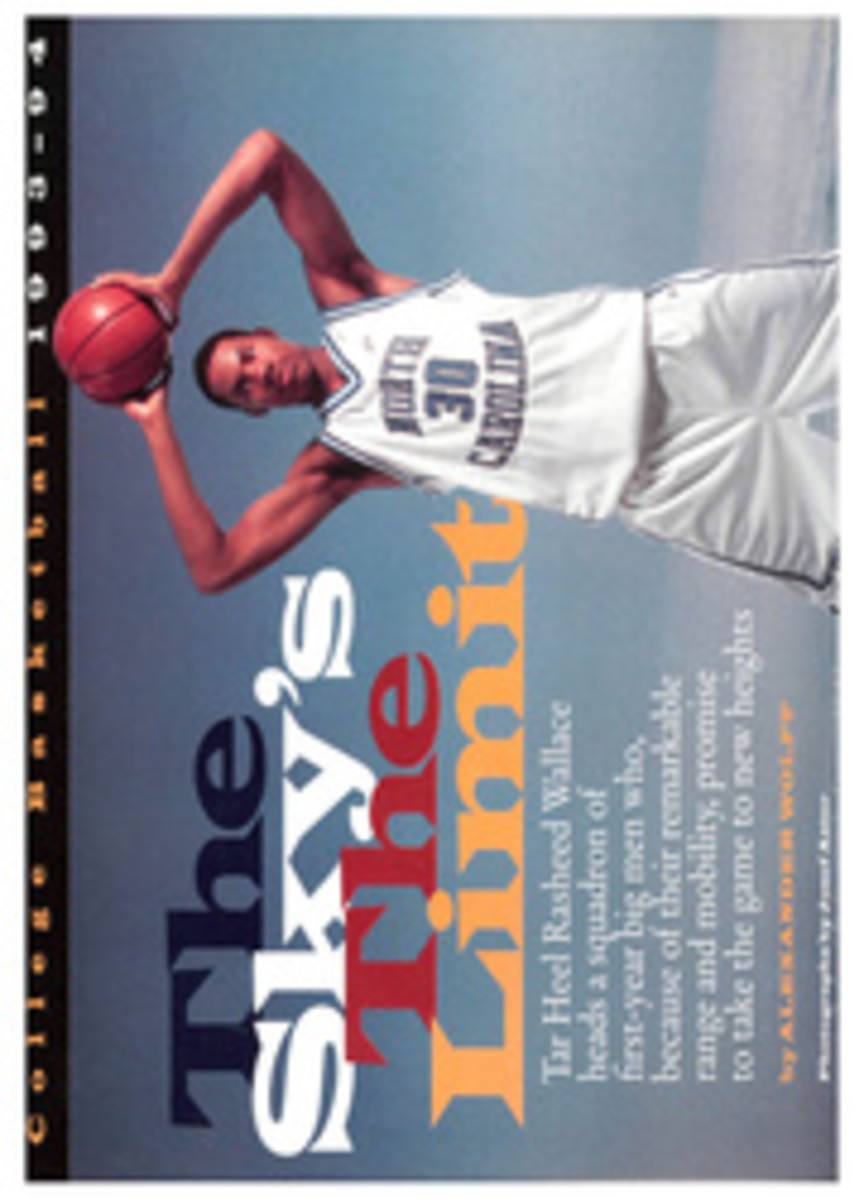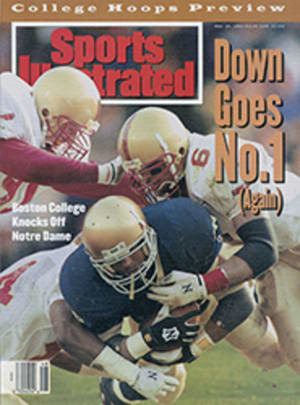
Wanna Be a Jockey?
"...and Good is taking Alfie to the outside for a clear run! Now they're hooking up with Pat Day and UPI Indy! Alfie is still under a hand ride! And down the stretch they come! It's Alfie in front by three parts of a length! Good goes to the whip on Alfie, and he's responding like a champion! Under the wire, it's Alfie and Judy Good winning the 125th Kentucky Derby!"
Secretariat? Bring him on. Seattle Slew? No problem. Astride Alfie, aspiring jockey Judy Good can dust any horse on any track.
Certainly it helps that the 32-year-old novice jockey has a vivid imagination. Crouched low, her whip a menacing arc above the homestretch, Good is momentarily oblivious of the fact that Alfie the wonder horse is nothing more than three bales of alfalfa hay with a saddle on top.
Yet while this high-fiber practice pony is no Derby prospect, he's a valuable part of the Paradise Ranch Racing School curriculum. Young men and women, some from as far away as Japan, come to Paradise Ranch in the desert community of Castaic, Calif., with the hope of becoming race riders. Their six to nine rigorous months of schooling include daily sessions on Alfie—horse racing's equivalent of a flight simulator—as jockeys build upper-body strength by isometrically holding the correct riding positions.
Traditionally jockeys and exercise riders have learned to ride at breeding farms, where they start out doing mundane chores like mucking stalls. "Most of us worked for free just to get a foot in the stirrup," says Kris Goddard, a former actress, exercise rider and the founder of the racing school. "Eventually a trainer would feel sorry for you and let you ride one of his horses. But learning to ride racehorses is a very dangerous activity if you don't have the right kind of instruction."
Goddard, who is around 40, knows whereof she speaks. Fifteen years ago, during her first year of exercising horses at Hollywood Park, she was catapulted into the rail by the dyspeptic 2-year-old she was riding. Goddard's left leg was broken in four places. "I really had no business being out there," she says. "Even though I was a good rider, race riding is something altogether different from pleasure riding. The horses are flying on adrenaline. It's very scary."
Goddard decided there had to be a better way for women to learn race riding. As she lay in a hospital bed with her leg in traction, she began planning her jockey school.
To earn money for the school's startup, Goddard continued doing commercial and film work after she recovered. And the following year, 1980, she founded the Women's Jockey Association, the forerunner of her school, using rented saddles and rented horses at an equestrian center in Castaic. She opened the school itself in 1982 and was immediately inundated with letters from women—and men—who wanted to attend. After opening the school to men two years later, Goddard moved it to its present location.
Surrounded by the Angeles National Forest some 45 minutes north of downtown Los Angeles, Paradise Ranch sits on 365 acres of rolling hills dotted with yucca plants. There are 80 stalls, living quarters, paddocks, electric hotwalkers, a shaded barn with a large wash rack and a half-mile training track complete with starting gate.
About 30 horses are kept at the school. Roughly half are 2-year-olds in training, and the others are retired racehorses. Most of the old campaigners, like 15-year-old Big Red, exhibit an astonishing unflappability that sometimes borders on torpor. Then there are the hellions, horses who were gelded as youngsters in a futile attempt to lower their irascibility quotient.
Good, a former accountant in San Francisco, is older than the average Paradise Ranch trainee. Most students are in their late teens and early 20's. The young men typically come in with little or no riding experience, though many are former high school wrestlers, compact, strong and practiced in weight control. Most of the young women, like Good, rode as children, and a few have already worked as exercise riders.
While six months is the average stay for students, some graduate from the course in as little as three months, but "those were the kids who came in with a lot of experience," Goddard says. For $275 each a month, seven to 15 students at a time can rent a room in one of two bunkhouses, which are small mobile homes near the one in which Goddard lives with her husband, Bill Davis, a trainer on the Southern California racing circuit who also teaches at the school.
Goddard estimates that about 75% of the students—who pay $1,100 a month to attend—graduate from the school, with 20% of them both skilled and small enough to become jockeys. Most of the 400 or so graduates have gone on to become exercise riders, trainers, grooms and farm managers. Goddard and Davis not only teach the students riding proficiency but stall mucking and basic track medicine as well. This enables a student to work also as either a groom or a hotwalker.
A typical school day begins at 6 a.m. Horses are groomed and tacked and taken to the track. Students gallop the horses according to Davis's instructions, then bring them back to the barn for a bath and a cooldown. Then the students move on to another set of horses until all the ranch's horses have been worked, bathed and fed. Afterward students watch training films and receive comprehensive instruction in the care of their mounts. There are classes in nutrition and stable etiquette, and students attend five or six days a week.
"Kris and Bill will work your butt off," says Corey Nakatani, 23, one of the nation's leading jockeys and Paradise Ranch's star alumnus, having won some $27 million in career purses. Nakatani fit the profile of the average male student perfectly—he was slight in stature but athletic, and he had never been on a racehorse in his life.
Nakatani credits Davis with giving him a much-needed break soon after he graduated in 1987. "The great thing about Bill is that he puts all of his students on his horses," Nakatani says. "It doesn't matter if it's a big race or a claiming race. Bill will go with one of us before he gets a McCarron or a Valenzuela."
Goddard and Davis like to think of their students as members of their extended family. There's Karen Jacobsen, an eager-to-please 19-year-old from Los Angeles, who has not yet graduated but works full-time for trainer D. Wayne Lukas as an exercise rider. And 16-year-old Danny Guthrie Jr., a brooding but gifted young man whose father was a jockey in California and Canada. "This boy looks like a jockey," Goddard observes as she watches Guthrie breeze a filly. "It looks like he's inherited his ability, the way horses pass on traits to their offspring. He handles the whip like a pro. It's definitely in his blood."
And there's Good, who recently graduated from the school and is working for Davis as an exercise rider at Hollywood Park. "Her intelligence and her dedication are her biggest strengths," Goddard says as Good, who visits the ranch frequently, trots by on Big Red. "She really wants it, and you can't teach that. We would have loved to have gotten her 10 years ago."
At her age, Good knows the odds are against her, and she's proceeding with one eye on fate's tote board. "I do know that I won't ride for one of those trainers who'll use exercise girls in the morning but won't ride a woman jockey in a race," she says. "Why set yourself up for that? I want to compete with the boys."
Can she? Goddard sighs. "Judy will do very well," she says, sounding like a worried mother. "No one is ever ready for the racetrack. It's a hard life."
Speaking of hard lives, the latest in a long line of Alfies is nearing the end of his. Swaybacked from the constant bouncing and pummeling, the old boy can barely stand. Goddard and Davis are faced with the inevitable: Alfie must be put down.
They act swiftly. Gently pulling off his saddle, they silently honor his many hours of noble service. Then they feed him to Big Red.
PHOTO
PETER READ MILLER
Richard Budge, head instructor, helps Nathan Thacker ride Alfie.
Stephanie Diaz has written a number of stories on horse racing for Sports Illustrated.

